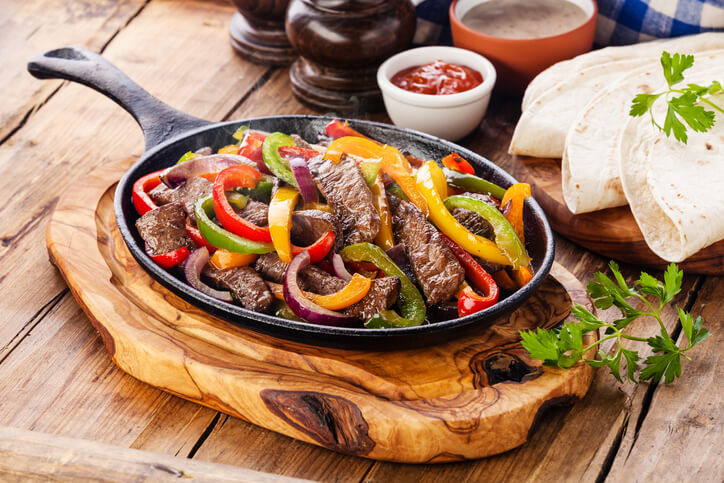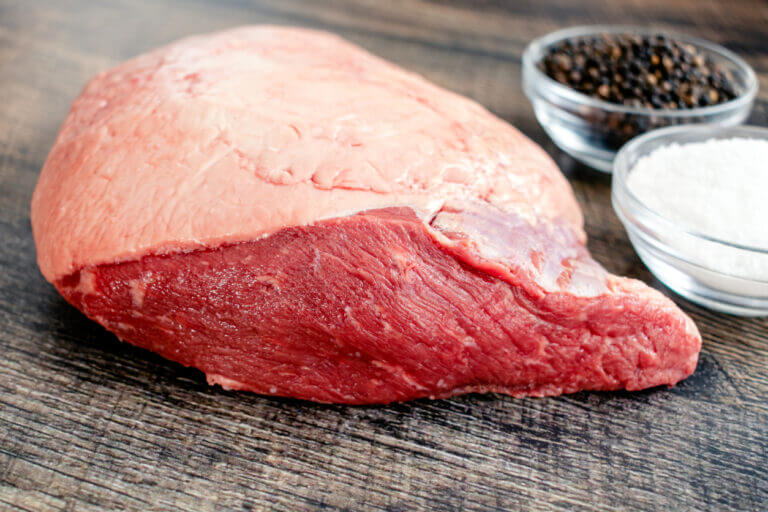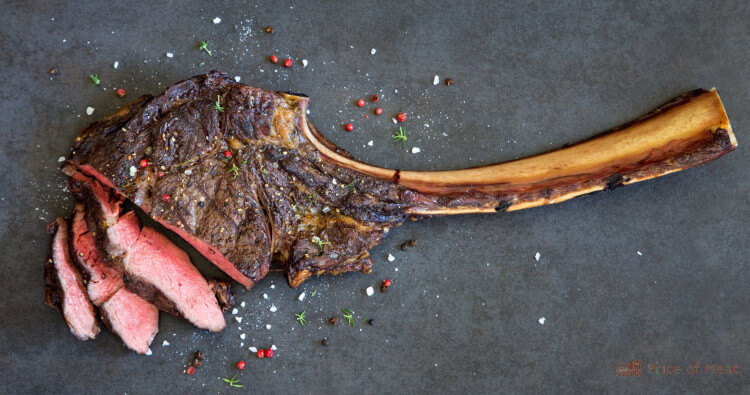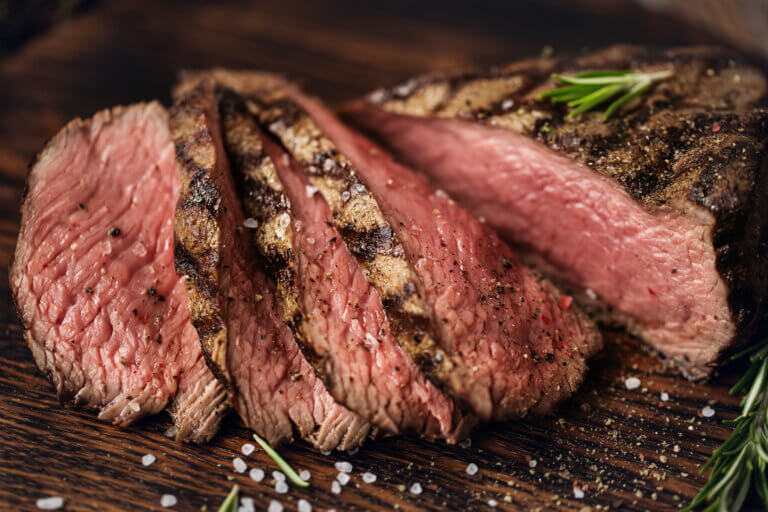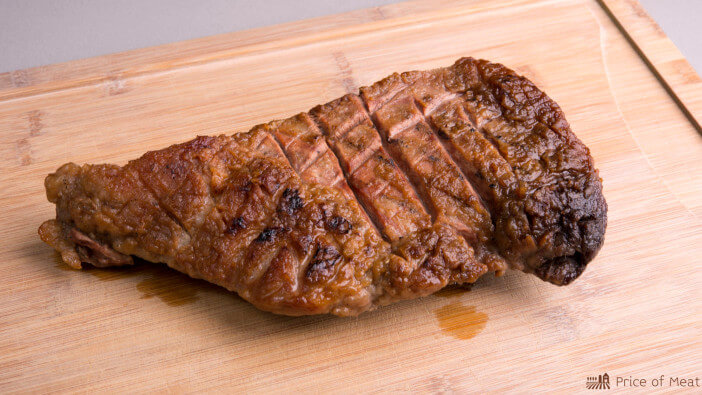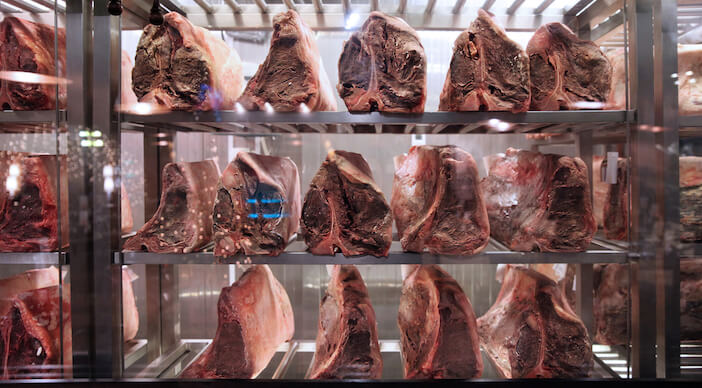From Rare to Well-Done: Understanding 6 Steak Cooking Levels
Steak cooking levels range from Blue to Well-Done, each based on temperature, texture, and color. USDA recommends 145°F for safety.
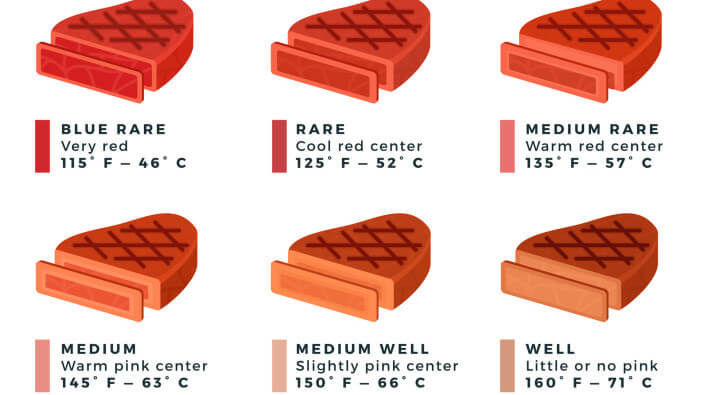
‘How do you like your steak?’ is a question that can spark debate and outright arguments because there are tons of misconceptions, myths, and misunderstandings when it comes to cooking steak.
The fact is that steak doneness has at least six stages. Each is based on temperature, texture, color, and flavor.
You can totally achieve each one easily and safely.
Disclosure: As an Amazon Associate, this site earns from qualifying purchases. Thank you!
What are the different levels for cooking steak?
- Blue (bleu)
- Rare
- Medium Rare
- Medium
- Medium Well
- Well Done
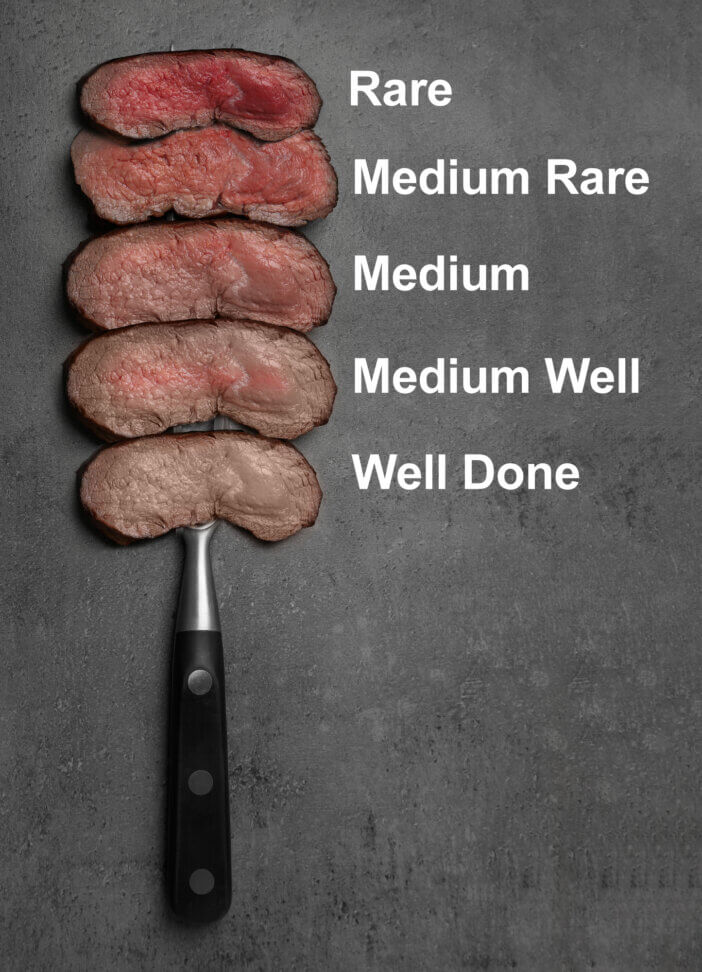
6 Different Levels of Cooking Steak Explained
The USDA recommends that all meat be cooked to at least 145°F to avoid any risk. But, if the proper precautions are taken, they are safe to eat
1. Blue (bleu)
Blue (bleu) steak is traditional French cuisine and is a little shy of entirely raw. It is the rarest of doneness and one of the harder cooks to pull off successfully.
It is referred to as blue because it is bluish or purple until it changes to red when exposed to air. It does this because the myoglobin gets oxygenated between the time it’s cut and when purchased it.
To achieve it, you must cook the cold steak under a high temp for a very short amount of time. It takes about a minute on each side of the steak and a couple of seconds around the edges.
You are looking for just a slight sear on the outside.
Don’t panic if the inside looks raw. That is the intention.
Can you get sick from blue steak?
One of the misconceptions is that raw steak will give you food poisoning.
Blue steak is entirely safe to eat if you follow a single rule.
Your steak must entirely be sealed before you eat it—E-coli chills out around the outside, not the inside of the meat (this goes for steak tartare as well).
And, blue steak requires that you cook the outside just enough to destroy any bacteria lingering around.
A blue steak is cooked at 115°F.
2. Rare
A rare steak is cooked a smidge longer than a blue steak. And those extra 60 seconds make it more tender.
Cook your steak for 2 minutes on each side and a few seconds on the edges to achieve that desired borderline raw doneness.
You want the inside around 75% red, and a little blood continues to ooze.
The outer layer should be seared until it darkens. The middle of your rare steak should be cool and red.
And most of the time, your rare steak will be hot on the outside and then lukewarm to cool on the inside.
The core temp needs to be 120°F.
Are rare steaks safe to eat?
Rare steak is safe to eat as long as two things are true:
- The internal temperature is 120°F.
- The steak was safely sealed prior to cooking it.
3. Medium Rare
Medium rare is one of the trickier levels for cooking steak because you are looking for half-pink and half-brown on the inside.
You want to cook each side for 3.5 minutes because a few seconds longer, and you will have a medium steak. The core temperature should be around 130-140°F.
A medium-rare steak is warm to the touch. Once it rests, it will firm up on the outside and stay tender and soft on the inside.
It will take practice and a lot of comparing steak cook times.
How long should I rest a medium-rare steak?
The time varies depending on the size of the steak. Resting your steak is so essential because you lose those wonderful steak juices the moment you cut into it.
It locks in those flavors when you give it a little while to do its thing.
But, a rule of thumb is 10 to 20 minutes.
4. Medium
Cooking a medium steak is just as hard, if not more so, than any stage of doneness before it.
You want to cook your steak for four minutes on each side. It will have a strip of pink through the middle. You are looking for a small amount of flowing juices.
The internal temperature needs to be around 140°F, and it should not have a red center.
Medium steak is going to be less tender than medium-rare and above. But, there is no shame in wanting less blood with your meat.
What Cooking Is Doing to Your Steak
- The muscle proteins in meat are tightly bound, and when cooked, they unwind. It is why the rawer steak cooks are chewier.
- Water makes up a good portion of steak. Cooking helps the excess water to evaporate. The more you cook it, the dryer it will get.
- The marbling that you see is what makes your steak taste like heaven. The heat melts the fat, which gets absorbed by the muscle, which also makes it more tender.
5. Medium Well
Medium well steaks border the texture of leather. It is dry, chewy, and has a less beefy taste than the previous doneness levels.
You will want to cook the steak for 5 minutes on both sides for a total of 10 minutes. If you cook it for 30 seconds longer, you might not be able to chew it all.
The internal temp should be 150°F, and the center with be a little pink and tender.
What is the best level to cook a steak?
Ignore the judgment because the temperature of your steak is all about your personal preference.
The different levels of cooking steak do not change any nutritional value of the meat.
Most steak connoisseurs prefer medium steaks because they hold their seasoning better and are juicier.
But, the way you like your steak is your business.
6. Well Done
Well done steaks are the dryest and chewiest level of doneness and are often referred to as ‘over done’ by some of the best grillmasters.
To achieve this level of doneness, you will have to cook it to the point that the fat and moisture evaporate.
The temperature you want to cook it at to get well done is 160°F, and you will notice it begins to char on the outside.
You should not see any pink on the inside. Instead, it will be a grayish brown.
5 Reasons Why Well Done Is Just Too Far
It is not judgment. It is that you want the most out of your steak because meat isn’t cheap.
Whether ordering in or getting that perfect cook, there are legit reasons why well-done doneness might just be a step too far.
- Quality of the cut. A lot of meat is meant to be ground up, braised, fried, etc. But, steak is naked and cooked with love and attention. Many steaks are deemed steaks from the time the cattle is fed until it’s cooked. (Ideally, anything from medium and above)
- Chefs get offended. You’re missing out on the beefy, juicy, and tender wonderment of a steak. Don’t take my word for it, the kind of steakhouses, Gordon Ramsey says so.
- It makes a steak chewy. Water makes up a good portion of meat, and when you cook it, you are evaporating some of that water. But, you can take it too far when you cook one too well done. You don’t want your steak unedible because you can’t chew.
- Peak doneness is peak medium-rare. Twenty-five degrees doesn’t matter when it comes to most food. But, it is the difference between cuts like butter and leathery greyness. A medium-rare steak “maintains the most flavor and it keeps the juice in the meat.”
- It might be a waste of your money. If you purchase expensive cuts, you’re probably just wasting your money. You might want just to buy a lower-quality cut with a well-done steak.
Remember, you aren’t making it any safer by cooking it longer. The USDA advises that as long as the meat is cooked at 145°F, it is safe to eat because it kills the bacteria.
How to Pinpoint the Perfect Temp for a Steak
A meat thermometer is the best way to ensure your steak has reached the level of doneness you want.
- Choose a quality food thermometer because you want an accurate reading.
- Hold the thermometer between your thumb and forefinger, sliding it into your steak towards the center.
- The center temperature is the reading you want.
It’s a chance to bust another myth. Some tell you never to poke a steak because you let the juices out. But the tiny hole isn’t going to hurt your precious steak.
You want an accurate reading, not just for a good cook but also for safety.
FAQs on Steak Doneness
What is the best rare steak to eat?
Flat iron, top sirloin, and Palermo are the best steaks to eat rare. The marbling makes for a tender and rare, juicy steak.
Because of the muscular structure of the three cuts, medium-rare is as much as you want to cook one.
What are the levels of doneness of steak?
- Blue (bleu) 115°F – bluish or purple until it changes to red when exposed to air
- Rare 120°F- The steak has a red center that is cool to warm to the touch, and the texture is tender.
- Medium Rare 130°F. Warm center. It is medium-rare when the crush is a crispy brown.
- Medium 140°F -. Hot pink center, and a firmer texture than a rare steak.
- Medium Well 150°F – The center with be a little pink and has retained a little of its tenderness.
- Well Done 160°F – It has zero pink on the inside. Itwill be a grayish brown
Can I freeze steak?
Sure, you can, but just skip the deep freeze if you plan to cook the steak in 3-5 days.
- You want to wrap the steaks individually using plastic wrap. Avoid butcher paper and aluminum foil because they don’t seal as tightly.
- Put the wrapped steaks in a freezer bag that seals securely for extra protection.
- The freezer should be as low as possible and as close to 0°F as possible.
You can store steak for up to 12 months when you seal it tightly. But, after three months, the meat begins to lose quality.
How to Shop For That Perfect Steak
- Know what cut of meat you want before you go.
- The thickness of the steak matters and depends on how you plan on cooking it. When buying more than one for dinner, you want them all to have the same thickness, and the edges should be even and not have ridges.
- USDA has a grading system for beef that can guide you through the grades of meat. The more marbling a steak has, the better when it comes to steak. – USDA Select, Choice, and Prime.
- Make sure the meat is a healthy color and slightly moist to the touch. Browning and slimy meat means don’t touch it and run away screaming.
- If the packaging is torn or it has liquid at the bottom, avoid buying the steak. Bacteria can sneak in through the tiniest of punctures.
- You want your steak firm and cold.

